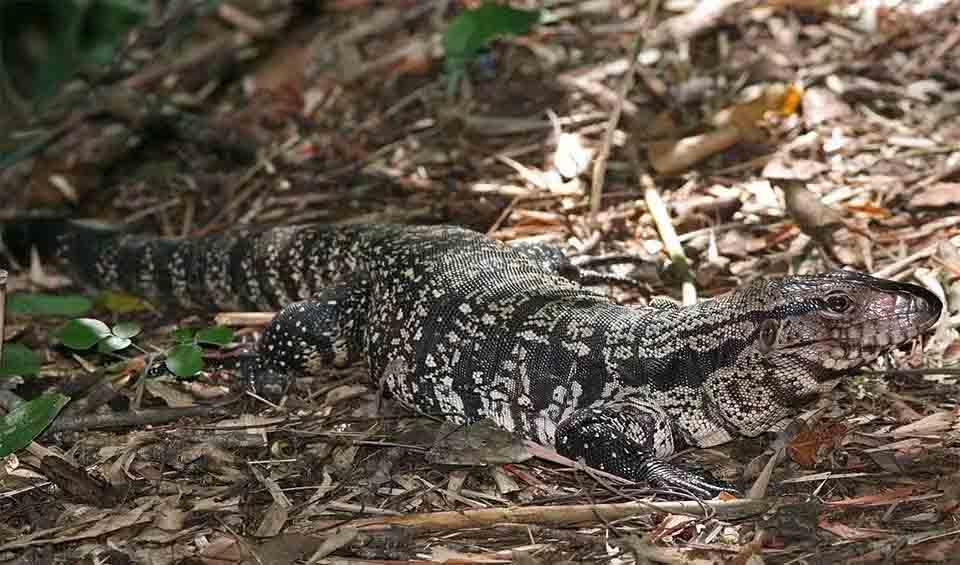Salvator – Tegus
They can elevate their body temperature through thermoregulation, which is unusual among reptiles
This genus comprises a group of large lizards known as tegus, native to South America. These reptiles are renowned for their size, intelligence, and adaptability. They have robust, muscular bodies, powerful limbs, and long, thick tails. Their skin is covered in tough, bead-like scales that give them a rugged appearance. They are found in a variety of habitats and are known for their ability to thrive in diverse environments.
The coloration of these lizards varies by species, like the Argentine Black and White Tegu. As the name suggests, this species has a striking black-and-white pattern across its body. Juveniles often have bright green heads that fade to black as they mature. While the Red Tegu has a reddish-brown coloration, with some individuals displaying more intense red hues. The red color becomes more pronounced as they age.
Tegus of the genus Salvator are highly adaptable and can be found in a variety of habitats, including forests, savannas, grasslands, and even urban areas. They are native to several South American countries, thriving in humid and arid environments.
These lizards are diurnal, meaning they are active during the day. They are known for their intelligence and inquisitive nature, often exploring their surroundings with curiosity. Tegus are excellent diggers and will create burrows for shelter, which they use to escape extreme temperatures and predators. They are also capable swimmers and climbers, making them versatile in their movements.
Species in this genus
Red tegu
One of the few reptiles known to show partial warm-bloodedness (seasonal endothermy)
Argentine black and white tegu
A popular pet in the United States, but it is also considered an invasive species in Florida



